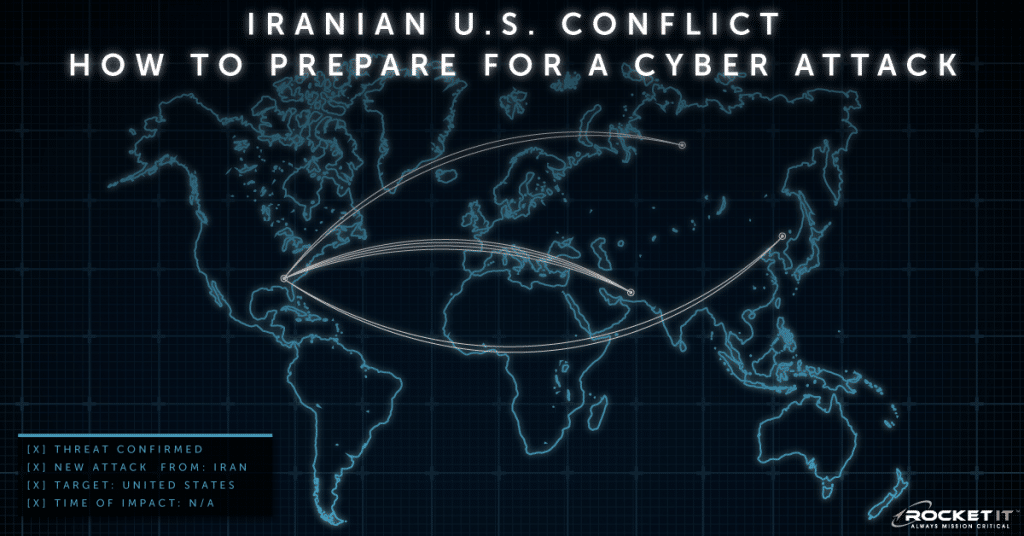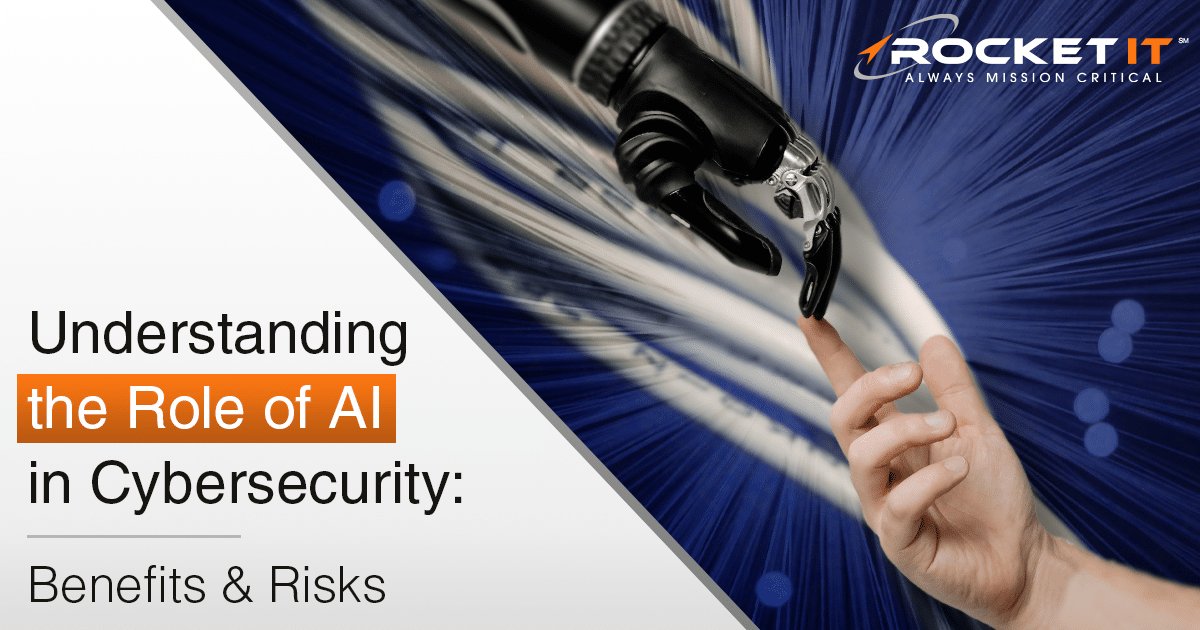Iranian U.S. Conflict | How To Prepare For a Cyber Attack

As tensions between the United States Military and members of Iran’s Islamic Revolutionary Guard Corps (IRGC) continue to result in feelings of aggression between both parties, civilians based in the US must be ready to defend themselves from the collateral damage that may come their way at any time.
A Warning Based on Previous Intentions
Following Iranian Major General Qassem Soleimani’s death on January 3, 2020, the Director of America’s Cybersecurity and Infrastructure Security Agency, Christopher Krebs issued a warning to businesses across the states. In his tweet, Krebs argues that it’s time for leaders to brush up on Iranian tactics, techniques, and procedures; paying close attention to their organization’s critical systems, internet connection sharing, and third-parties attempting to access the business’ network. And while Krebs may have been limited to 180 characters in his tweet, the message is clear: it’s time for businesses to place cybersecurity at the forefront of their strategy and budget.
Addressing the Situation
So, let’s say an organization doesn’t heed this warning, and nonchalantly conducts business as per usual. What’s the worst that can happen, right? Well, the reality is that this isn’t the IRGC’s first attempt at foiling the livelihood of US-based business. In 2014, the Las Vegas Sands Casino was hit; resulting in stolen consumer data that placed the publicly traded company in a state of panic. But while the Sands Casino attack left the information of its customers in jeopardy, the motives of IRGC’s attacks can shift dependent upon the business and its industry.
Therefore, the CISA warns that the impact of these attacks can include:
- The disruption and destruction of technology needed for operation.
- Remote infiltration of industrial control systems.
- Intellectual property theft in an attempt to understand a business’s strategic decision making.
- The spread of false information in an attempt to persuade public opinion of the business.
To assess the likelihood that an organization will be attacked and where it may be hit, it’s important to get a third-party’s perspective on the scenario. IT services providers are well-known for offering this type of service, and Rocket IT is no different. While we won’t dig too deeply into those determining factors here, variables to consider include the company’s competition, its global appeal, its size, and the industry it’s housed within.
Bracing for Impact
While many businesses may be unknowing to the seriousness of these threats, rest assured that those with proactive IT strategies have already begun entering a state of hyper awareness; locking down all cyber operations in the process. But when placing an organization’s trust in the hands of an IT provider, where does one’s defensive strategizing begin?
Risk Analysis
Well, as you may have thought, it’s important to first review the security procedures it currently has in place. This provides an opportunity to find and address vulnerabilities in pieces of technology that are key to a business’ operations. Essentially, organizational leaders need to know what may happen if this technology goes down, and how long it may take to restore.
Incident Response Planning
During a state of emergency, unprepared individuals tend to panic; making it difficult to relay critical information. By proactively establishing a communication chain of command and defining trustworthy outlets for message dispersal, an organization can ensure it retains a seemingly standard flow of operations.
Training Staff on Best Practices
It only takes one slip up from a single user to initiate a total takeover of a business’ network. Fortunately, organizations can opt into Rocket IT’s custom tailored training initiatives to mitigate the risk of compromised user accounts impacting the company as a whole. Simply put, these educational seminars are broken down into three key areas: password protection, flagging suspicious behavior, and developing regular backup procedures.
Because there’s quite a bit of information packed into these three security components, attempting to explain each in its entirety via this short article would do you a disservice. Therefore, Rocket IT has written dedicated posts that give a more thorough explanation of each:
- Password Security
- Phishing Testing
- Backups
Regular Patching
As widely adopted business platforms, such as Microsoft Windows, are continuously updated, previously discovered vulnerabilities are resolved with each major patch. If left unchecked, these vulnerabilities can add up; providing hackers with easy access to proprietary business information. But while keeping software up-to-date may seem like a simple task, patching software across an entire network of users requires thoughtful planning, an IT department with System Administrators, and automated patch management systems.
The Role of Rocket IT
As you can tell, a lot of diligence and expert knowledge goes into proper cybersecurity planning. In turn, it’s Rocket IT’s responsibility to ensure businesses are continuously made aware of trending digital threats. But simply bringing this information to the eyes of an organization’s leaders isn’t enough to offer protection. Businesses must reflect on key areas of cybersecurity improvement; strategizing and budgeting to the mitigate the risks of company-wide attacks. By developing and testing the security offerings mentioned in this article, Rocket IT provides clients with security measures known to generate impactful results. To request any or all of these services in your own organization, give our team a call at 770.441.2520.
Related Posts
Subscribe to Rocket IT's Newsletter
Stay up to date on trending technology news and important updates.

Find out if Rocket IT is the right partner for your team
Claim a free consultation with a technology expert.










